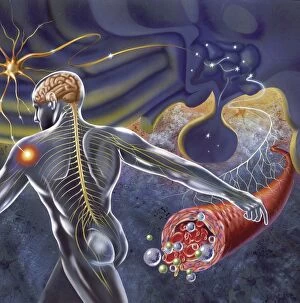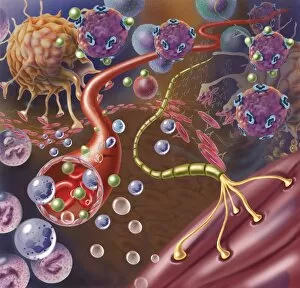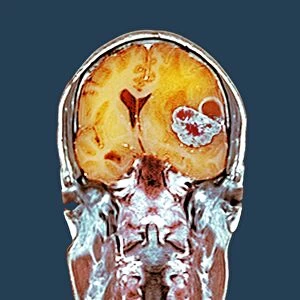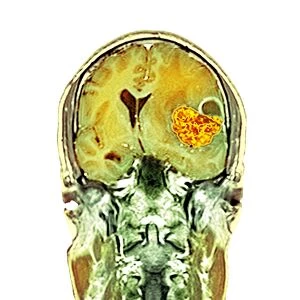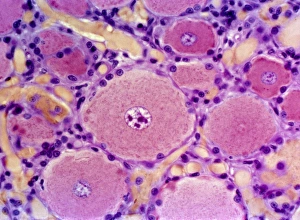Glial Cells Collection
Glial cells, also known as neuroglia or glia, are an essential component of the nervous system
All Professionally Made to Order for Quick Shipping
Glial cells, also known as neuroglia or glia, are an essential component of the nervous system. These remarkable cells play a crucial role in supporting and protecting neurons, the primary functional units of the brain. When we examine the brain lining under a scanning electron microscope (SEM), we can observe intricate networks intertwined with neurons. They form a complex web that provides structural support and insulation to these delicate nerve cells. In another SEM image, we see glial cells present in Fallopian tube tissue. Although their function here is not fully understood yet, it highlights how versatile these cells are throughout different parts of our body. However, sometimes things go awry within our neural network. Brain cancer becomes apparent through advanced imaging techniques such as diffusion tensor imaging (DTI) and 3D CT scans. These scans reveal abnormal growths within the brain's delicate structures – a stark reminder of how vital glial cell functioning is for maintaining neurological health. A schematic representation showcases how the hypothalamus receives nerve impulses from various parts of our body. Glial cells surround these connections, ensuring efficient communication between different regions and coordinating bodily functions seamlessly. Moving down to microscopic levels, we encounter nerves with myelin sheaths connecting with muscles – an illustration of how glial cells aid in transmitting signals effectively across long distances within our bodies. Unfortunately, genetic disorders like neurofibromatosis disrupt this harmony. This condition affects the nervous system and often leads to tumors forming on nerves themselves or nearby tissues – highlighting once again why understanding glial cell behavior is critical for combating such diseases. Scientists have made significant strides in directed differentiation experiments involving multipotential human neural progenitor cells – unlocking potential therapeutic avenues by manipulating these versatile glial precursors into specific neuronal lineages. Examining light micrographs reveals fascinating details about nerve ganglia where clusters of neuronal cell bodies reside alongside supportive glia - further emphasizing their indispensable role in maintaining neural function.


